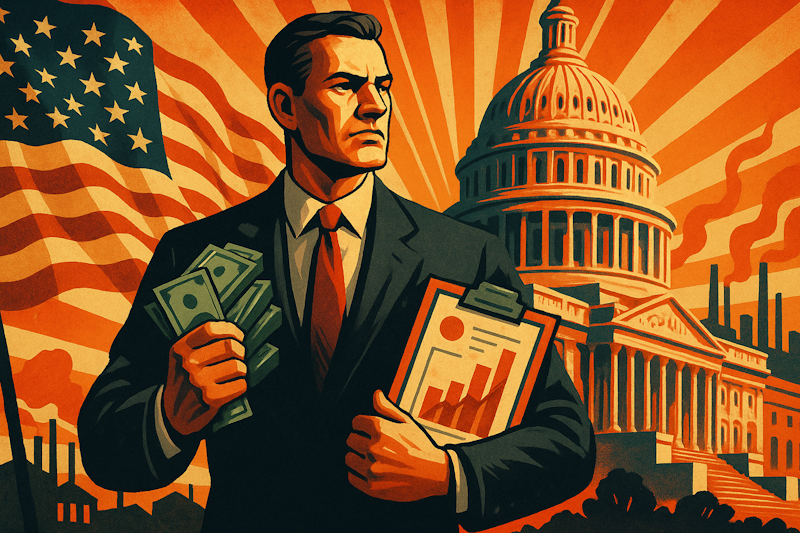Like Mike Tyson said, “everyone has a plan until they get punched in the face.”
Which makes me wonder what that guy’s plan was last week when he threw a bottle at Mike Tyson.
Whatever it was, I bet it didn’t work out as he expected. Violence is volatile. The outcomes hard to predict.
Now, most people have better plans. Plans that account for uncertainty. Ones more along the line of “hope for the best, plan the worst” kind of thing.
But when uncertainty gets too high, any plan feels worthless. Or, rather, beyond a certain point, the best plan is to not plan anything. Pulling in your tentacles and curling up in a hole might seem the best bet.
The massive volatility in energy markets has caused that exact thing in the oil industry.
And while Plan “No Plan” can save oil companies from massive losses, it only throws fuel on an already flammable situation…
Twice the Risk, Same Expected Reward
You see, energy markets find themselves caught in a self-fulfilling uncertainty trap. A positive feedback loop (not the good kind) that feeds on itself — driving uncertainty higher.
As uncertainty increases, so too does volatility.
For instance, oil prices that could have ranged from $80 to $120 in previous, lower vol days can now as easily hit $50 or $150.
And for an oil company with a plan to fund a project that’s profitable at oil north of $100, the additional profit at $150 gets completely overshadowed by the prospect of massive losses. That’s because, while $80 per barrel price still amounts to a loss, it’s a manageable loss. But should oil trade to $50, well — that could wipe out a project — especially one that relies on leverage.
But it’s not all on the oil company. Oil trading firms commit less capital to trades. Lenders tend not to lend to projects with such a wide range of payoffs. And equity investors won’t invest.
As more and more oil market players pull back, volatility rises even more to compensate for drastically reduced liquidity.
It’s not a process that tends to end well.
And that “plan not to plan” isn’t the only self-feeding process at play in the markets.
Running to Stand Still
Last week I wrote about how most of the money injected into the U.S. economy by the Federal Reserve is sitting idle.
And that results in very low currency turnover in our economy.
It’s called money velocity. And, at currently around 1.1 times per year, it’s never been lower by a long shot in the 70-plus years they’ve tracked it.
Consider money velocity as an inflationary match. And money supply as the tinder.
And while inflation has hit 40-years highs, it’s still hasn’t been enough to strike that match.
But now that prices have begun to pinch, people desperate to not yield too much of their living standard have started leaning on their credit cards. They’re running to stand still because they’re not buying more stuff. Just paying more for the same stuff.
They still end up with a loaf of bread and gallon of milk for the week. But that, and everything else, simply costs more. And taking on more credit card debt helps fund that gap.
That pulls more previously idle money into the economy, keeping spending up, driving prices higher still until, finally, all those trillions end up chasing the same goods around as before.
Add to that workers demanding higher wages and investors demanding higher returns on capital and the flames really start to lick higher.
So, make that two self-feeding processes driving markets into the fringe. And there’s more where that came from.
The question you need to answer for yourself is, what’s your plan for dealing with Fringe Markets?
Simple and Short-Term Pays a Premium
Now, one plan would be to sit this one out. But I bet today’s volatility will be with us for quite a few years. Which is a long time to wait it out and a great way to miss out on the enormous opportunities markets on the fringe create.
And those opportunities are exactly what subscribers to my new 21st Century Wealth Society service get several times each week.
I share with them the results of my trading method that, based on results of the last several months, seems custom-built for high-volatility, low long-term plan markets.
Since December 15, this method has allowed me to generate a 792% return across 52 trades. And all trades were straight-forward buys of puts and calls.
It’s simple. It’s short term. And as uncertainty rises, any plan you have for profiting in high volatility markets will need both.
You are free to try it out here. And there’s no risk to you for joining today. Don’t like the service any time over the next month, and you can get completely refunded.
Plus, you’ll be locking in a great price for what I believe is the only way to thrive in Fringe Markets.



